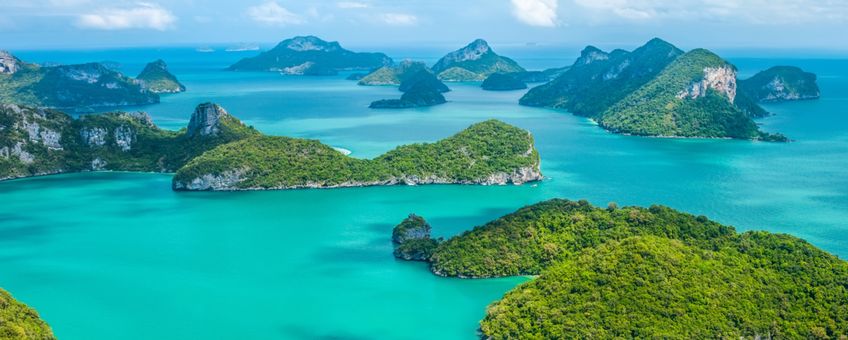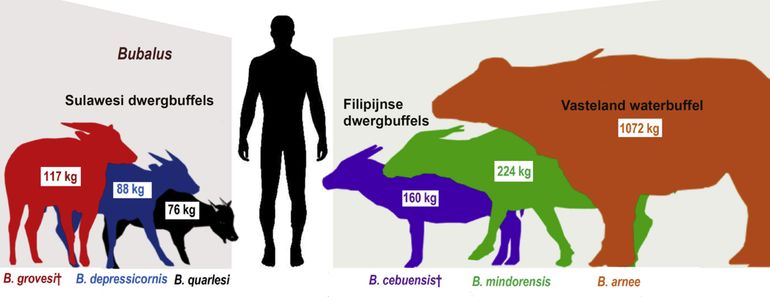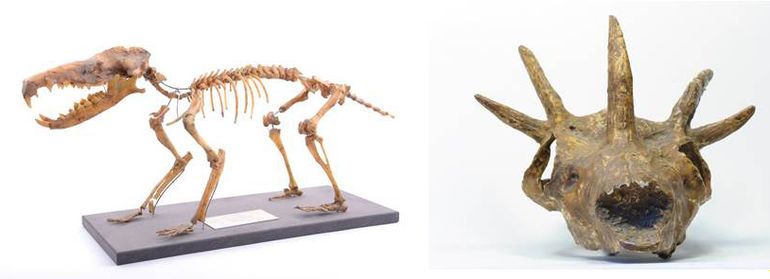
Giant rats and pygmy elephants: mammals change on islands
Naturalis Biodiversity CenterLarge islands such as Sulawesi, Luzon (Philippines), and Madagascar are well-known for their wealth of mammal species. Most of the species found there do not occur anywhere else in the world. Such islands are therefore called biodiversity hotspots. Examples of unusual mammals are the dwarf buffalos, pigs with unusual canines, and a shrew without teeth from Sulawesi. Examples found on Luzon include dwarf deer, tarsiers, and wooly giant rats. Madagascar tops the list with fossas, more than one hundred species of lemur, and about thirty species of both tenrecs and mouse lemurs.
This is but a small selection of the rich diversity of island animals worldwide. In the past, such unique mammals lived on virtually all large and medium-sized islands. Researchers from Naturalis and the National and Kapodistrian University of Athens investigated which species lived where and when, what they looked like, and how they lived. They described more than 300 species on 80 islands worldwide across the past 66 million years in the new edition of their textbook, Evolution of Island Mammals. Adaptation and Extinction of Placental Mammals on Islands.
Dwarfs
A striking pattern throughout the book is the evolution of large animal species into dwarf forms. Without predators, such as lions, large grazers like elephants no longer need to be so big. A smaller size is favorable as it requires less food. The smallest species of dwarf elephants were as large as a pony, and the smallest dwarf hippopotamuses were the size of a pig. Humanoids were also sometimes small on islands, as we know from Flores and Luzon. For example, Homo floresiensis (the Flores man) was just 110 centimetres tall.

Giants
At the other end of the scale, we see small species that become larger on islands. Without predators, they no longer need to hide in cracks and passages and no longer need to be so small. A larger size has the advantage that more reserves can be built up to survive in harsh periods. Furthermore, their metabolic rate falls because large animals have a relatively smaller surface area and so lose less heat. The larger species of giant rats and giant dormouse were as large as a large cat. A giant moonrat would even reach the size of a small dog.
Besides giants and dwarfs, there were also bizarre species such as a deer species with five horns, goat-like animals with continuously growing incisors, and a dwarf elephant with four tusks. Other species evolved into a variety of species (adaptive radiation), like the lemurs of Madagascar. The largest of these, as large as a gorilla, have become extinct; the very smallest, as small as a mouse, are fortunately still living.

Dutch islands
What about the Dutch islands? Unfortunately, the Wadden Islands and the islands of Zeeland are geologically very young and only arose in the Holocene, the current era. Evolution usually requires more time. Furthermore, the majority of these islands are too small or too densely populated to accommodate larger animal species. The largest Wadden island, Texel, is about 170 square kilometres. By way of comparison, the smallest island (Karpathos) where a dwarf deer ever lived was about 600 square kilometres in size during the ice age. The smallest dwarf hippopotamus ever lived on Cyprus, an island of about 10,000 square kilometres.
What about the Netherlands Antilles, then? In the Pleistocene, a rice rat, a small mouse, and an armadillo lived on Bonaire. Curaçao accommodated a sloth, several species of medium-sized rice rats, and a giant rat. A giant rat also lived on Sint Maarten. Just like on the majority of islands, the endemic mammal species there have now become extinct, some as recently as in the twentieth century. We therefore have a duty to take care of the remaining island residents, such as those on Sulawesi, Luzon, and Madagascar.

More information
Text: Alexandra van der Geer, Naturalis Biodiversity Center
Photos: Shutterstock; Alfred Wallace; Greek Golangco; Frank Vassen; Roberto Rozzi; Naturalis; Museum National d’Histoire Naturelle, Parijs

